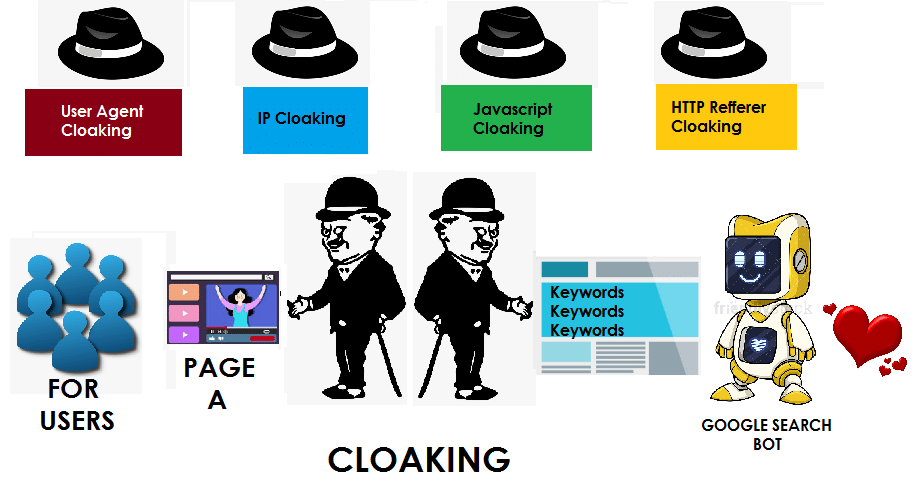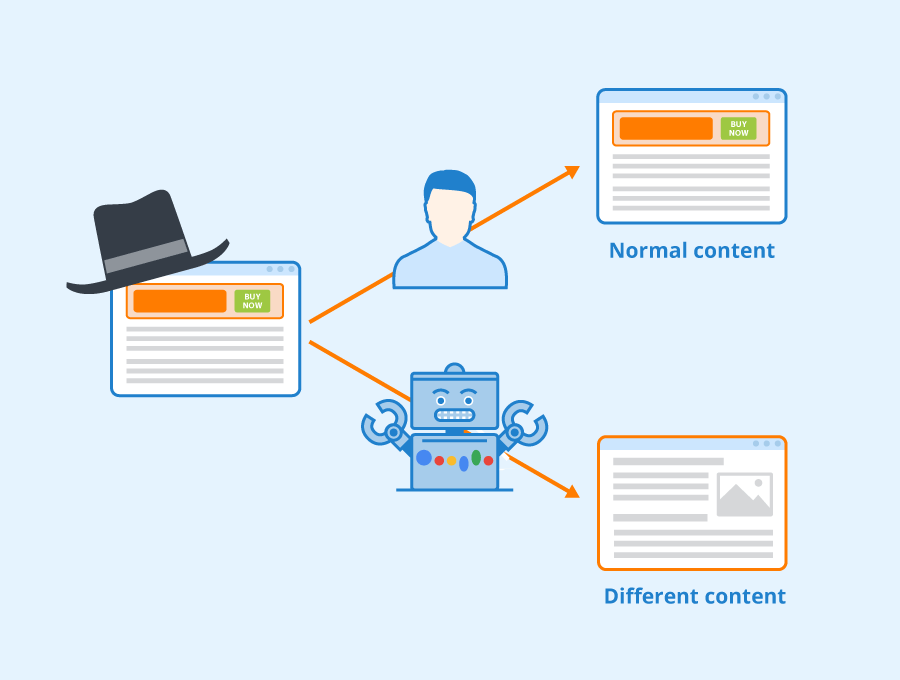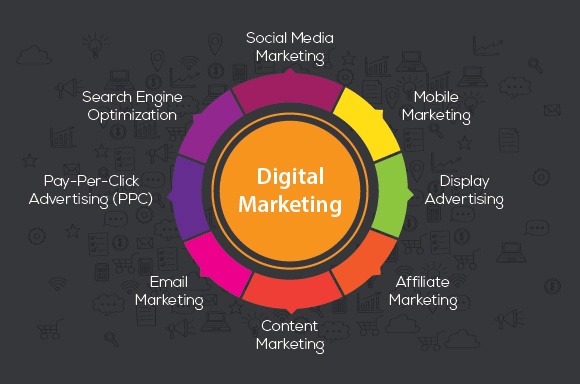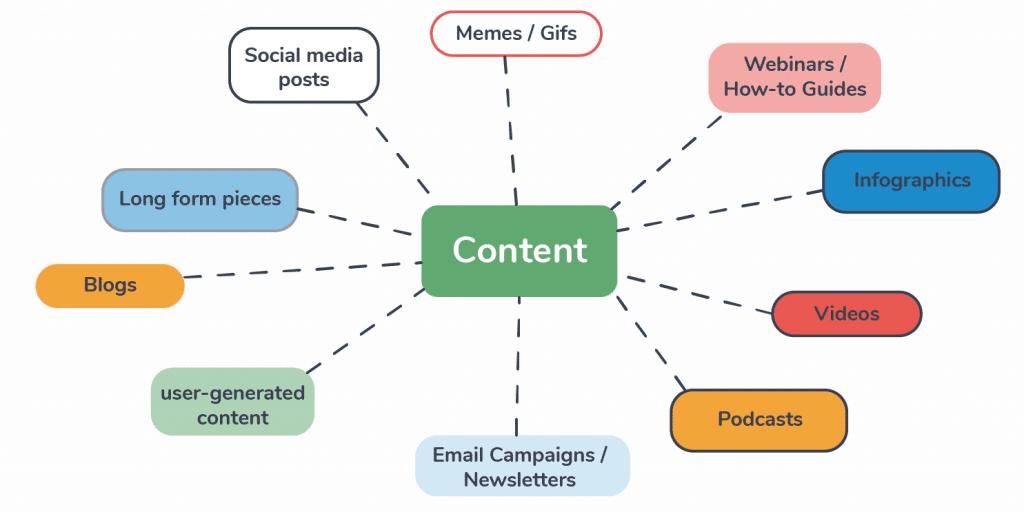Definition and Explanation
Cloaking in the context of SEO is a technique where different content is shown to search engine crawlers compared to what regular users see. Essentially, the website presents one version of content to search engine bots to improve search engine rankings, while displaying another version to actual users. This is achieved by serving content based on specific criteria to deceive search engines into giving the website a higher ranking. The purpose of cloaking can range from manipulating rankings to hiding illegal or undesirable content from being indexed by search engines.
History of Cloaking
Cloaking has been utilized as a part of various black hat SEO strategies to exploit search engines since the early days of online optimization. Over time, search engines have refined their algorithms to detect and penalize websites engaging in cloaking practices.
Why Is Cloaking Prohibited?
Cloaking is strictly prohibited by search engine guidelines, including Google’s Webmaster Guidelines. Search engines penalize websites found using cloaking techniques by downgrading their rankings, banning the site, or even removing it entirely from search results. This practice not only goes against ethical SEO principles but also risks damaging the reputation and credibility of the website in the long run. It also results in frustrating user experiences by serving them irrelevant or misleading content.

Types of Cloaking
IP Cloaking
IP cloaking is a type of cloaking technique that involves serving different versions of a website based on the IP address of the visitor.
This technique is often used to deliver tailored content to visitors from different locations. Here are some key points about IP cloaking:
- Websites can display different products or services based on the geographic location of the visitor.
- IP cloaking allows websites to personalize their content to cater to the specific needs and preferences of visitors from different regions.
- This technique can enhance user experience by providing relevant and localized information to users based on their location.
User-Agent Cloaking
User-Agent cloaking is another common type of cloaking that serves different versions of a website to different web browsers based on their user-agent string. Here are some important aspects of user-agent cloaking:
- Websites may offer a simplified version of their content to mobile browsers to improve loading times and readability.
- User-agent cloaking helps optimize the user experience by tailoring the website’s presentation to the specific characteristics of different browsers.
- This technique ensures that users accessing the website from various devices receive content that is best suited to their browsing experience.
By understanding the different types of cloaking techniques such as IP cloaking and User-Agent cloaking, website owners can utilize these strategies effectively to enhance user experience and potentially improve search engine visibility.
Cloaking Techniques
JavaScript Cloaking
JavaScript cloaking is a technique used to deliver different content to users and search engine crawlers based on JavaScript code execution. Here’s how it works:
- Process: When a user or a search engine crawler accesses a webpage, JavaScript on the page checks for specific conditions (like user-agent or IP address) and dynamically changes the content displayed accordingly.
- Usage: Website owners may utilize JavaScript cloaking to show optimized content to search engines for better rankings while displaying different content to users for improved user experience or specific marketing purposes.
- Advantages: JavaScript cloaking allows websites to customize content presentation, potentially improving SEO performance and user engagement.
- Risks: However, if misused by showing significantly different content to search engines compared to users, it can violate search engine guidelines and lead to penalties, affecting the website’s ranking.
HTTP Header Cloaking
HTTP header cloaking involves altering the HTTP headers sent and received during communication between the server and the client. Here are some key points about HTTP header cloaking:
- Functionality: By manipulating HTTP headers, websites can serve different content based on the user-agent or other header information.
- Implementation: Webmasters can set up rules to detect specific user-agents or IP addresses and respond with customized content.
- Considerations: While HTTP header cloaking can be used for legitimate purposes like serving mobile versions of websites to mobile user-agents, it can also be abused for cloaking intended to deceive search engines.
Incorporating these cloaking techniques requires careful consideration of ethical and legal implications to ensure compliance with search engine guidelines and maintain a positive online reputation.
Importance of Cloaking in SEO
Impact on Search Engine Rankings
Cloaking in SEO can have a significant impact on a website’s search engine rankings, but not in a positive way. Here are some key points to consider regarding the impact of cloaking on search engine rankings:
– Negative Ranking Consequences: Implementing cloaking can lead to penalties from search engines like Google, causing a significant drop in rankings.
– Loss of Trust and Credibility: Search engines prioritize user experience, and cloaking undermines this by deceiving both users and search engines. This can damage the trust and credibility of a website.
– Long-Term Damage: While cloaking might provide short-term benefits in terms of increased traffic or rankings, the long-term consequences can be severe, including being removed from search engine results entirely.
Benefits and Risks
Understanding the potential benefits and risks of cloaking in SEO is crucial to making informed decisions about your optimization strategies. Here are some factors to consider:
– Short-Term Traffic Boost: Cloaking may yield temporary increases in search traffic or rankings, but these gains are often short-lived.
– Penalties and Bans: The risks of cloaking far outweigh any potential benefits. Websites caught cloaking can face penalties ranging from decreased rankings to being completely banned from search engine results.
– Damaged Reputation: Engaging in cloaking practices can tarnish a website’s reputation and brand image, leading to a loss of credibility among users and search engines alike.
In summary, while cloaking may seem like a shortcut to improved SEO performance, the negative consequences far outweigh any temporary benefits. It’s essential to prioritize ethical and transparent optimization practices to build a sustainable online presence and avoid damaging repercussions in the long run.
Cloaking FAQ
What is an example of cloaking in SEO?
Cloaking in SEO can take various forms, but one common example is IP cloaking. Website owners may serve different content based on the IP addresses of users, showing search engine crawlers one version of the site and regular users a different version. This tactic aims to deceive search engines into ranking the site higher by presenting tailored content.
Is Cloaking good for SEO?
Cloaking is not considered good for SEO. It is a black-hat technique that violates search engine guidelines, especially those set by Google. While it might provide temporary benefits in terms of search engine rankings, once discovered, cloaking can result in severe penalties, including a drop in rankings or complete removal from search engine results pages.
Does black hat SEO work?
Black hat SEO techniques, such as cloaking, may yield short-term gains by manipulating search engine algorithms. However, search engines continuously update their algorithms to combat such practices. Ultimately, black hat SEO is not sustainable in the long run and can lead to penalties, loss of organic traffic, and damage to a website’s reputation. It’s better to focus on white hat SEO strategies for long-term success.
In conclusion, while cloaking may seem like a quick fix to boost SEO rankings, it’s crucial for website owners to adhere to ethical SEO practices to build a sustainable online presence and avoid potential pitfalls associated with black hat techniques.
Legal and Ethical Considerations
Cloaking and Search Engine Guidelines
Cloaking, as discussed, is a deceptive SEO practice that violates the guidelines set by major search engines like Google. By presenting different content to search engine crawlers than to users, websites engaging in cloaking risk penalties, including a drop in search rankings or even removal from search engine indexes. This contravenes the principles of fair play and transparency that underpin the integrity of search engine results. Search engines work tirelessly to detect cloaking through sophisticated algorithms that compare the content served to crawlers with what is shown to users. Detection of cloaking can lead to severe consequences, emphasizing the importance of ethical SEO practices.
Cloaking and Online Advertising Regulations
Beyond search engine guidelines, cloaking can also run afoul of online advertising regulations. By misleading users and search engines with different content presentations, websites may find themselves in violation of advertising standards that mandate transparency and honesty in online promotions. Cloaking that leads users to unexpected or irrelevant content can damage the trust between consumers and brands, potentially resulting in legal issues.
Engaging in deceptive practices like cloaking not only risks penalties from search engines but can also expose businesses to lawsuits and reputational harm. Upholding ethical standards in online advertising is crucial for building trust with customers and maintaining a positive brand reputation. These considerations underscore the ethical and legal risks associated with cloaking, reinforcing the importance of transparent and ethical SEO practices for long-term success in the digital landscape.
Get High Ranking Without Using Black Hat SEO Tactics
Embrace White Hat SEO Strategies
Transitioning from black hat SEO techniques like cloaking to white hat strategies is essential for long-term success in search engine rankings. White hat tactics focus on ethical and legitimate methods to optimize a website. These strategies align with search engine guidelines and provide sustainable results over time.
Quality Content Creation
Creating high-quality, relevant, and engaging content is key to attracting both users and search engines. Focus on producing valuable content that addresses the needs of your target audience. Regularly update your website with fresh and informative content to keep users engaged and encourage organic traffic growth.
Optimize On-Page SEO Elements
Optimizing on-page elements such as title tags, meta descriptions, and header tags can significantly improve your website’s visibility in search engine results. Ensure that your website is properly structured, and relevant keywords are strategically placed throughout your content to enhance search engine optimization.
Build Quality Backlinks
Earning backlinks from authoritative and relevant websites can boost your website’s credibility and improve its search engine rankings. Focus on creating valuable and shareable content that naturally attracts backlinks from reputable sources within your industry.
Monitor and Analyze Performance
Regularly monitor your website’s performance using tools like Google Analytics to track key metrics such as traffic, bounce rates, and conversions. Analyze the data to identify areas for improvement and make informed decisions to optimize your SEO strategies. By adopting white hat SEO techniques and focusing on providing valuable content and positive user experiences, you can achieve high search engine rankings without resorting to black hat tactics like cloaking.
Remember, sustainable SEO success is built on authentic and ethical practices that prioritize the user’s needs and preferences.













